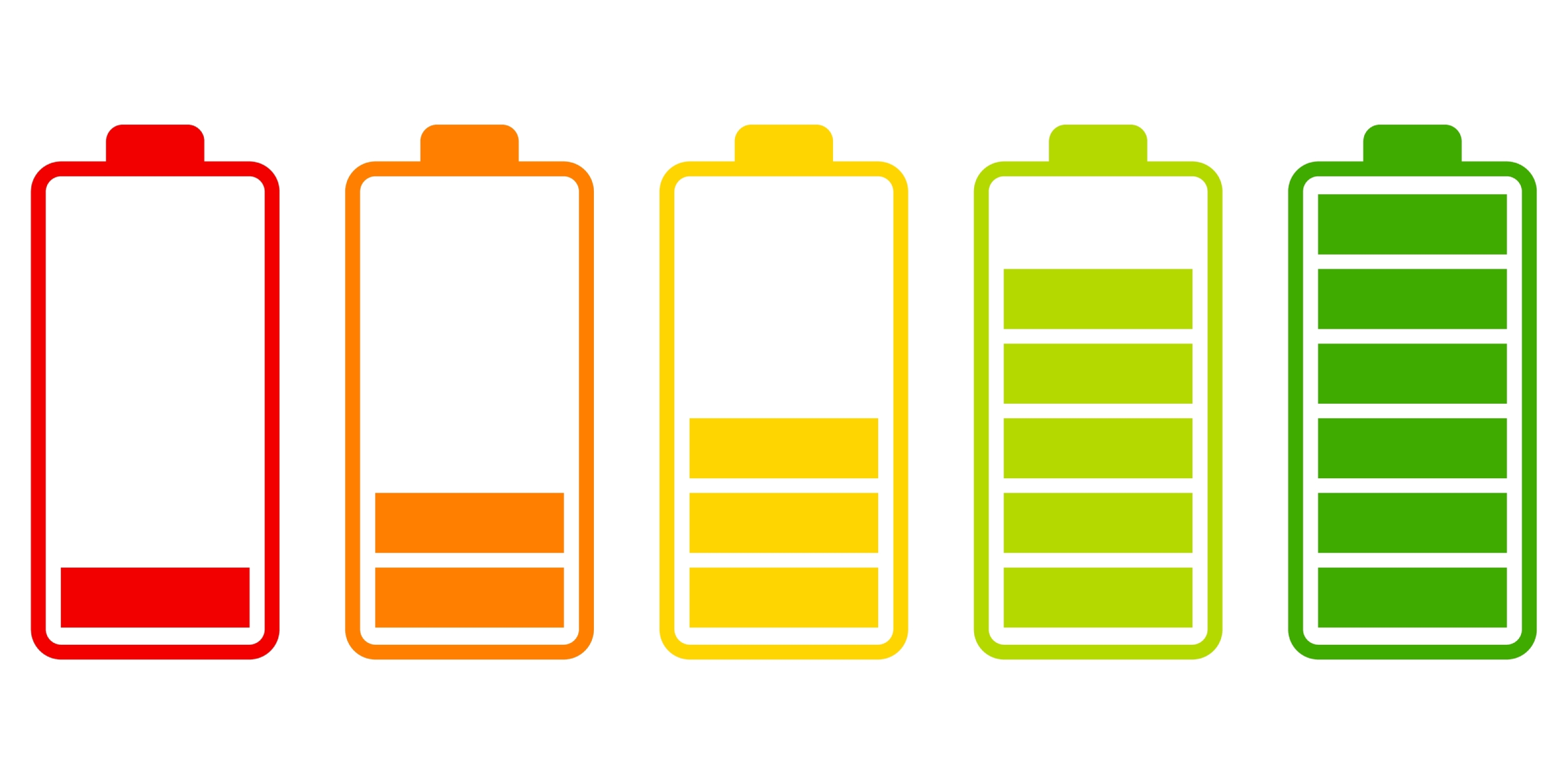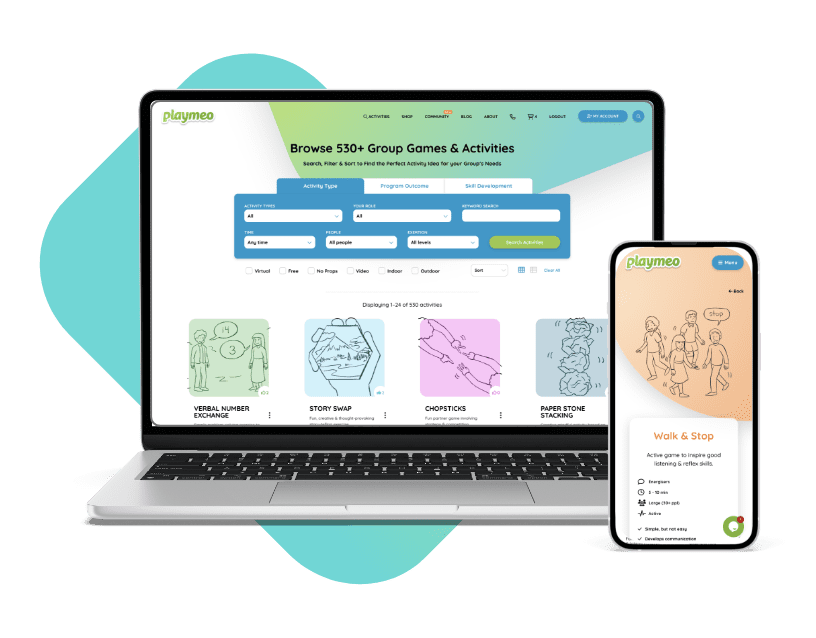Download our free 28-page ebook jam-packed with outrageously fun activity ideas.
This post is the second of four articles designed to help you effectively lead large group programs.
- What’s So Special About Large Groups?
- Essential Tips for Working with Large Groups – Part 1 (this one)
- Essential Tips for Working with Large Groups – Part 2
- How To Get Your Group’s Attention
The following tips capture what I believe to be the most useful, practical advice for working effectively with groups, no matter their size, but especially if they are large.
Note I said effectively. Anyone can run a program with a big group, but the advice I share below (in no particular order) will move everyone’s experience from a so-so time to a truly rewarding event.
There are ten tips & tricks in all, drawn from my book Count Me In: Large Group Activities That Work. For the purposes of brevity, I decided to spread them over three separate articles.
1. Just Start Playing
One of the surest ways of killing your program right off the bat is to announce, “Hi, my name is Mark, and I’d like to play a game with you…”
To be brutally honest, the best way to ruin a game is to tell your group that you’re going to play a game. Just start. Don’t fluff about. Get them busy as soon as you can. I often leave my introductions and name-knowing stuff until much later in the program. And if I’m still waiting for some folks to arrive, I frequently use some form of unofficial start to kick off proceedings – which is simply a ruse to keep people busy.
This advice is just as germane for small groups, but the speed at which a negative thought spreads with a large group is 10 x faster. Don’t give it a chance to germinate; people will be swept along with a more powerful form of contagion – your enthusiasm!
To give you an idea of how it’s done, here’s an actual excerpt from a recent audio recording of mine:
“Heelllloooooooooo, and welcome. Come on in (waving my hands towards me), don’t worry about forming a circle, just bunch on in. <pause> Hi folks, my name is Mark Collard, and welcome to [name of program]. Now (smiling broadly), if you’re like me and sometimes find yourself standing with a group of people you don’t know, you often feel a little self-conscious, right? You look around and notice that most people seem to have nothing in common with you, or worse, no one appears to be feeling quite as awkward as you. Sometimes, you’ll be standing there with your arms crossed, thinking, I won’t be forced to do anything. <sniggers as several people uncross their arms> To make those folks who just uncrossed their arms a little more comfortable <more laughter> I invite you all to cross your arms in front of you now. Perhaps you’ve never thought about this before, but you have unconsciously divided yourselves into one of two groups. You either have your left arm crossed over your right, like me. Or, and I have now changed, you have your right arm crossed over your left. If you are a left-armie like me, I would like you to stand over here <pointing to my left> …. and if you are a right-armie, I’d like you to stand over here……”
And in the space of 60 seconds, I have not only started my program, but I have also managed to introduce myself, arouse some laughter, and generate some feelings of empathy and not one game was announced.
2. Use Pairs
Paired or partnered activities – which require two people to play – are my most powerful tool when working with large groups.
First of all, it’s hard to be left out of a pair, so it creates lots of ‘safety’ within a group. Many partnerships doing the same thing also make for lots of energy, which goes a long way to creating success in your program. Also, it is rare for the individual members of large groups to know everybody, so presenting a series of paired activities where you frequently invite people to swap partners (see Getting Into Pairs for lots of ideas) creates lots of mixing and getting-to-know-one-another moments.
And finally, if you discover an uneven number of people in your group – guess what – it’s your turn to play 🙂
3. Being Heard
Being heard is not just a matter of raising your voice. In fact, I strongly recommend that you don’t raise your voice. It is entirely possible to be heard and have a voice left to use at the end of the day. This should be your goal.
Imagine for a moment that your voice has a volume dial ranging from 0 (silent) to 10 (maximum loudness.) Now consider that your average volume when speaking with someone in general conversation is a 3 or 4. Here’s the thing – commit to addressing your group at levels approximating 5 or 6 on most occasions, and if you ever have to raise or project your voice, do so at a comfortable 7 or 8 and no more.
Save the 9 and 10 for real emergencies – that’s what the voice at 9 or 10 was exclusively designed for. Constantly addressing a large group at 9 or 10 will do two things – one, you will quickly lose your voice, and two, your group will get used to you screaming at them, so much so that they will gradually talk even louder to be heard over you. It’s a never-ending cycle.
I have found that the most effective volume to address my group is approx 5 or no more than 6. Once people get the idea that I am speaking, they quieten down, lean or shuffle in toward me, and then surprisingly, even the largest groups of up to 200 sets of ears can hear me.
Coming up, I will share some of my most potent strategies to get my group’s attention.
4. Factor In More Of Everything
As discussed in last week’s article, large groups consume more of everything. Plan accordingly.
The activities you lead with large groups will take more time than you expect – allow at least an extra 20% than you would for ‘smaller’ groups. You will need more equipment to share around, especially if there is a risk of breakage or spillage – have more on hand than you think is necessary.
You will also need more people or leaders to help you be heard, control the crowd, distribute and gather things, etc.
5. Use Innovative Group-Splitting Exercises
When I was at school, I hated the typical “1, 2, 3, 4, 1, 2, 3, 4, 1, 2, …” count-off, not to mention the dreaded ‘pick two captains’ scenario (yes, I was always picked last!)
These self-esteem-crushing exercises are not fun nor particularly good at creating random, fairly even groupings.
Commit to using a variety of innovative and fun methods to break your large group into smaller groups. They generate energy and often lots of laughter in the process. Sometimes, the group does not even recognise that they are being split up until it’s too late – perfect for interrupting those hard-to-crack cliques.
Look at Getting into Pairs and Getting Into Teams for lots of fun, creative, and totally engaging group-splitting ideas.
Coming Up: Tips #6 to 10
My list of essential tips for working with large groups (#6 to 10) will continue next week. Stay tuned…
How To Work with Large Groups & Survive
Essential Large Group Tips: Part 2













Original post June 2023, last updated March 2024.